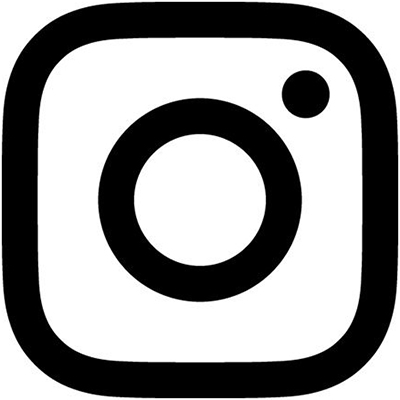Exhibitions 2017
Spring 2017
PIERRE ET GILLES. Clair-obscur
16.02.2017 > 14.05.2017
Pierre et Gilles embody a highly sophisticated art of the portrait, somewhere between photography and painting. They infuse a touch of humanity to the artificial beauty of celebrity, glorify ordinary people and enchant the world with superheroes plucked from mythology, the Bible and fairy tales. Nourished by art, film and all forms of popular culture, these painted images fit perfectly into the contemporary world.
Curator of the exhibition: Sophie Duplaix, Centre Pompidou
PIERRE ET GILLES, Interview Extract
C.G. Don’t you do castings?
G. No, not at all. We don’t call the agencies, we don’t do castings. I believe that generally it’s the model who reveals to us the picture and the subject. We construct the idea around the model.
P. Sometimes we do have certain ideas we’d like to do. Then it drags on and on, until we find the model.
G. We put it away in a corner and then, all of a sudden, we say to ourselves “He’s the one to do it, or she’s the one.” But it’s never a latter of “We’ve got this idea, so let’s look right away for someone to do it.” That’s not how it happens.
C.G. Progressively, you have used more and more elaborate décors.
G. At first, the settings were quite sober, painted backgrounds with motifs, very Pop. Later, the decor developed, but by bit.
P. We’ve always worked at home, so when we got a bit bigger place, the decors got bigger, too. It’s all very homemade, we do everything ourselves.
G. Very “homemade”, and that’s the way we want it. In our opinion, creativity comes in at all levels, from the beginning of the décor to the end. Sometimes, we call on hairdressers, make-up or costume people. But in general, it’s not the case, we do it only when we’re forced to.
C.G. Your studio looks a little like a Hollywood set?
P. Oh, it looks more like a Georges Meliès set-up! It’s very DIY, a bit like a theatre set. Everything is built just for the objective.
G. Pierre does not move within the decor with his camera. The camera is placed on a tripod. There is one focal point from which we look and everything is made to suit that point.
C.G. After that, you retouch the picture?
G. The picture is repainted, yes, The painting work is considerable. That takes time. I do the painting and Pierre shoots the photo. We are very complementary. We each have our role.
Extract from the interview with Pierre et Gilles and Catherine Grenier first published in Héros, cat. expo., interview with Pierre et Gilles with Catherine Grenier, text by Pierre Noual, Paris, Daniel Templon Gallery/Communic’Art, 2014, reprinted in Pierre et Gilles. Chiaroscuro, cat. expo., Sophie Duplaix (dir.), text by Marc Donnadieu, Sophie Duplaix, Michel Poivert, interviews with Pierre et Gilles with Catherine Grenier, Michel Nuridsany and Jérôme Sans, Brussels, Racine/Museum of Ixelles/Le Havre, MuMa – Museum of Modern Art, André Malraux, 2017, pp. 242-244.

Pierre et Gilles at the Museum of Ixelles is also a bilingual catalogue (French and English), directed by Sophie Duplaix, includes essays by specialists in contemporary art (Sophie Duplaix, Michel Poivert, Marc Donnadieu), contains interviews with Michel Nuridsany (1994), Jérôme Sans (2001) and Catherine Grenier (2014) as well as many quality colour illustrations. It is published to commemorate the occasion of the exhibition.
 |
DELPHINE. Never give up
|
Delphine has made her place in the world of European art as a nonconformist and colourist artist. She is known for producing multimedia work full of colour, texture and humour with a universal appeal. From painting to neon to sculpture, her work is dynamic, playful and offbeat. With affection, Delphine tries to inspire the dispossessed and bring the most powerful and proud back to reality. Her preferred subjects are those that question identity, power and justice.
Delphine describes her work as an allergic reaction to the power of scandal, rumour and gossip in general! Using words and phrases make Delphine’s message incredibly simple and direct, whilst her use of colour and composition allow room for fantasy and irony.
At the Museum of Ixelles, Delphine presents a retrospective of work from 1989 to 2016. The pieces chosen hold enormous significance for her. They have become her means of expression in social and political circumstances beyond her control.

In parallel to the exhibition, is the release of the book :
Never give up
Ana Finel Honigman (preface by Claire Leblanc and Yves de Jonghe d’Ardoye)
Bilingual edition French-English
96 pages
Marque Belge Editions, 22€
 |
JEAN BOGHOSSIAN
|
In this exhibition, Jean Boghossian offers us a brief overview of his latest and most recent aesthetic research. For the most part, it concerns four mediums: paper, canvas, the artist's workbook and wood. For several years, he integrated these materials with fire. He often uses smoke, but sometimes mixes it with pigments.
Exhibition Curator : Bruno Corà (Burri Foundation)
Sumer 2017
FROM CHINA TO TAIWAN. Pioneers of abstraction
15.06 > 24.09.2017

At the end of the 1940s, in the troubled political context of the Chinese civil war and the subsequent seizure of power by Mao Zedong, over a million Chinese left the mainland to seek refuge in Taiwan. In the new world that opened to them, the artists gradually discovered the abstract art of the schools in New York and Paris.
Abstraction became a means for them to become part of the international modernist movement, while expressing their deep cultural roots. At the crossroads of the East and West, they created a unique art that led to the regeneration of 20th century Chinese painting.
Ton Fan group (1956-1971)
Ton Fan was created in 1956 by eight students of professor Lee Chun-Shan (1912-1984). Their first exhibition was in November 1957 in the Taiwan Shin Sheng Daily News building in Taipei. The name, meaning Orient in Chinese, expressed a desire not to depart from oriental culture.
From the beginning, the group displayed a vanguard spirit by focusing exclusively on abstraction. The chronicler Ho Fan (1910-2002) described its members as horseback brigands to emphasize their intrepid spirit.
Europe had a strong influence on the group. Hsiao Chin, who had studied in Spain and settled in Milan, regularly sent articles from Europe which were published in the Taipei United Daily News. These writings, relating to European art news, were much anticipated on an island where such information was rare. He went on to organise group exhibitions in Europe and the United States, including New York, Stuttgart and Turin, as well as exhibitions by European artists such as Lucio Fontana, François Morellet, Piero Manzoni and Antoni Tapiès.
The group announced their dissolution after their fifteenth exhibition in 1971. Its members continued their principles through the creation of the Lee Chun-Shan Foundation, whom they considered their spiritual guide.
Wuyeu (Fifth moon) group (1957-1972)
Wuyeu was founded in 1957 and exhibited for the first time on 10 May that year at Zhongshan Hall in Taipei. This exhibition was organized by Professor Liao Chi-Chun (1902-1976) and brought together six of his students from the Department of Arts of the Provincial University of Taiwan.
Following the example of the Salon de Mai, the famous Parisian event, they chose the name Wuyeu, which means May in Chinese, and then anglicised by naming it Fifth Moon. The idea was to form a perennial group, which held friendly meetings and artistic exchanges, and aimed to exhibit every year in May.
After the third exhibition in 1959, under the direction of Liu Kuo-Sung, the group decided to devote itself exclusively to abstraction. From 1961 onwards, it opened to integrate new painters from all over the island and artists such as Hu Chi-Chung and Fong Chung-Ray joined the group.
Liu Kuo-Sung, Chuang Che and Fong Chung-Ray theorized their art by writing numerous articles that raised tumultuous debates about modern painting in Taiwanese artistic circles. These new theories advocating abstraction largely influenced the aesthetic orientation of Taiwanese painters of later generations, especially in the evolution of modern ink.
Exhibition catalogue
Sabine Vazieux
FROM CHINA TO TAIWAN. Pioneers of Abstraction
Racine Editions
Hardcover
260 x 270 mm
272 p., 130 color illustrations
Bilingual edition (FR-EN)
€34,95
ISBN: 978-2-39025-016-6
Available in all good bookstores, on www.racine.be and at the Museum of Ixelles.
 |
ELIE BORGRAVE
|
Elie Borgrave. Balance of Opposites is the first retrospective devoted to this artist, whose painting is entirely dedicated to abstraction. Around forty paintings and drawings dating from the 1940s to the 1990s make it possible to discover a singular and an unknown work in the history of abstraction after 1945. Archived documents and old photographs show the man behind the artist. These unpublished documents also allow the visitor to enter the intimacy of the workshop. The exhibition follows the chronology of the painter's life led by Borgrave (1905-1992).

Curatoring
Denis Laoureux is curator of the exhibition and professor of Art History at the ULB, in charge of courses related to modern and contemporary art.
In parallel to the exhibition
Elie Borgrave is the first publication devoted to this artist whose painting is entirely dedicated to abstraction. Nearly 150 paintings and drawings made between the years 1940 and 1990 make it possible to re/discover work that draws its sources from the dynamics of contrasts. It explores the chaos of lines and the serenity of fields of color, the diversity of the palette and the aspiration for monochrome as well as the effects of rhythm and the suspension of time. The book also presents documents that retrace a career that began in 1946 in Brussels and continued on to the United States. In New York, Borgrave was spotted by the Stable Gallery, where he exhibited abstract paintings in 1955. In 1962, the artist settled in Belgium and pursued an exploration of the language of abstract painting which led him to evoke, by pictorial means, the fullness of Zen spirituality. A book for lovers of abstract art in search of new discoveries.
Denis Lamoureux and Anthony Spiegeler
Elie Borgrave
Snoeck Editions
Soft cover
248 x 280 mm
224 pages, 180 color illustrations
French
€28
ISBN : 978-94-6161-380-6
 |
OLIVIA HERNAÏZ
|

I am interested in the prevalence of the myths on which our modern societies are built. We spend our time telling stories, talking about things that do not exist like gods, laws, justice, money, human rights and democracy. My proposals question the effectiveness and the legitimacy of these imaginary fictions that humans have created in order to be able to live together.
With Make Yourself Comfortable, I tried to awaken the political animal that hibernated in me, (in)voluntarily sleeping with overly complex or simplistic political speeches. As an interior decorator and even a seasoned housewife, I created a hybrid space, somewhere between a meeting room and a family lounge, at the crossroads of politics and domestic life. Logos borrowed from political and financial organizations serve as decorative motifs for the different elements of this living room. A video clip, which unceasingly repeats in a loop, sells us our unsung tomorrows.
Following the banking and financial crisis of 2008, many banks went under whilst others sought to improve their image. But money is no longer gold. Since 1971, the race to virtualize money has been steadily accelerating and the working couple, the father and mother of the alienated individual, are tirelessly turning to the virtual money board to keep their heads above water. But the iceberg is melting. And this is not a figure of speech. It's All About You is a love song. A promise, a hope, a broken relationship in which one seeks to restore confidence. Because everything is on trust, confidence in growth, confidence in the future. The belief that tomorrow everything will be better than today.
Before, humans knew where the sun was. Today, they live in bubbles of light. Forests have become foreign to them, dangerous or indifferent. However, their survival depends on the willingness of imaginary fictions such as the United States, the World Bank, global Southern debt, the International Monetary Fund, G-20, the European Union or Goldman Sachs. The Solar Economy leans towards the construction of a capitalist ideal through magazines advertisements from the 1980s. These ads reflect the technological race that drove economic growth. But our economy is solar. Will the man who takes himself for a god burn his wings ? Meanwhile, we are circling in the circle of eternal production. Amen.
Olivia Hernaïz
 |
TRIBUTE TO JEAN COQUELET
|

Jean Coquelet was born in Brussels on January 3rd, 1928. He was curator of the Museum of Ixelles from 1957 to 1988 and affiliate professor at the ULB (Université Libre de Bruxelles) from 1962 till 1977.
Jean Coquelet wrote one of the most beautiful chapters in the history of the Museum of Ixelles. He has made it possible to firmly anchor the museum in modernity and propel it among the must-see museums in the national cultural scene.
As an art historian with a keen eye, he brought major works from the history of Belgian and international art into the Museum of Ixelles collection (The Happy Donor by Magritte in 1966, Max Janlet’s legacy in 1977…) and organised numerous large-scale exhibitions at the forefront of the currents of his time, rehabilitating artists then still underestimated such as René Magritte (1959), Léon Spilliaert (1961), Je-Nous (1975), Victor Servranckx (1965), Oscar Jespers (1966), Paul Delvaux (1967), Félicien Rops (1969), Toulouse Lautrec (1973), The Maeght Foundation (1975), The Thyssen-Bornemisza Collection (1977), The Spitzner Museum (1975) and Alfons Mucha (1984).
He died in Brussels on October 8, 2015.
Document Actions








